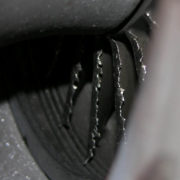Exclusive – 3 Tips to Eliminating Contamination in Aerospace Components
At PTI, our passion is helping our clients reduce their manufacturing lead times. Every month, our experts will share their insights and experience on the specialized processes that we deliver, on time, every day for our aerospace, medical, automotive and commercial customers.
This month, we will be focusing our attention upon contamination in aerospace components. Today’s significant technological advances and the advent of nanotechnology, components that are exposed to any outside contamination, in some cases as small as 5 microns, could suffer catastrophic failure.
Overview
The importance of eliminating contamination in aerospace components first became relevant during the Second World War with the development of the Norden Bombsight and the first navigational gyroscopes. What the military discovered was that even the smallest particles, less them 50 microns, would cause either of these devices to malfunction.
The technological advancements that followed the war came with a significant challenge: they required ever increasing degrees of cleanliness. The development of cleanliness standards for critical components was the direct result of satisfying the need for common terminology and standardization.
In 1962 a military standard, known as MIL-STD-1246 was created to establish guidelines and requirements for the specification of cleanliness levels essential to product reliability and quality. In 1997 the U.S. Army commissioned the Institute of Environmental Sciences and Technology (IEST) to adapt this military standard and create the industry standard knows as IEST-STD-CC1246.
Today, the importance of this standard extends far beyond military applications. Many non-military manufacturers have discovered that obtaining optimum performance from their product is directly linked to its cleanliness. The process of eliminating contamination to this standard is known as Precision Cleaning.
3 Tips
PTI Precision Cleaning expert Chuck Osborn offers these 3 Tips for Eliminating Contamination in Aerospace Components:
- During the initial phases of manufacturing, you should start off with a Cleanability study. Look at the part from the standpoint of “will we [or someone else] be able to clean out the foreign object debris (FOD) we are going to generate in making it”.
- To achieve highest levels of cleanliness on a finished component, it is critical that these components have in-process cleaning done to them throughout the entire manufacturing cycle. Our research and studies have shown that not all manufacturing debris can be removed during a single Precision Cleaning process at the very end of the cycle.
- If you are using water based machining coolants during the manufacturing process, make sure that you flush it out of internal passageways and off of external surfaces immediately after each machining operation. Water based coolants have a tendency to gel and trap FOD in the part, making it extremely difficult to remove.
Learn More
If you have any questions about how our Precision Cleaning specialized processes can eliminate contamination in your critical aerospace components, or would like more information on any of our other specialized processes, please contact us using the form on the right.

